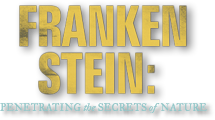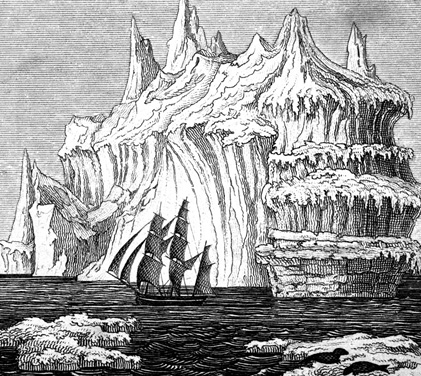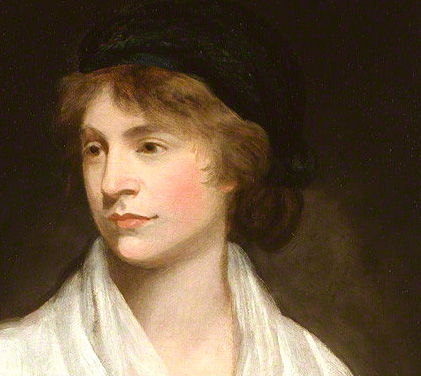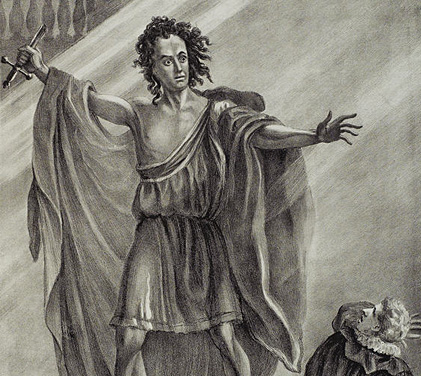Education Related Resources at NLM
Resources in HMD
The National Library of Medicine maintains and makes available a vast print collection on a wide range of health topics. The Library’s collection includes investigations into ways to improve or prolong life. Among this selection are works by notable Renaissance and Enlightenment scientists that cover a range of procedures like blood transfusion, transplantation, and resuscitation; as well as subjects that have since been discredited like eugenics. Here are selected items from the collection, each of which provides insight into early endeavors that helped to shape modern medicine.
-
Agrippa von Nettesheim (ca. 1486—1535)
- De incertitudine & vanitate scientiarum & artium, atque excellentia verbi Dei declamation. 1531.
- De incertitudine & vanitate scientiarum declamatio invectiva, qua universa illa sophorum gigantomachia plus quam Herculea impugnatur audacia, doceturque nusquam certi quicquam, perpetui, & divini, nisi in solidis Dei eloquiis atque eminentia verbi Dei latere. 1532.
- Paradoxe sur l’incertitude, vanité & abus des sciences. Traduitte en françois ... [par Louis Turquet de Mayerne].Translated into French by Louis Turquet de Mayerne. Paris, 1603.
- Insignes curationes, et singulares observationes centum. In quibus varia morborum genera, eorumq́ue propria & appositissima remedia therapeuticaq́ue ratio explicantur. Accesserunt Henrici Cornelii Agrippae ... Contra pestem antidoton haudvulgare. Itemque Consilium contra diarrhoeam, clarissimi cujusdam olim & Electoris Coloniensis & Principis Juliacensis, &c. medici.... Cologne, Germany: Matthaeus Smitz Publisher, 1625.
-
Blood Transfusion
- James Blundell. Researches Physiological and Pathological. London: Cox Publishing, 1824.
- Richard Butler. An essay concerning blood-letting : shewing the various effects and peculiar advantages of bleeding in different parts of the human body, particularly in the foot ; with proper directions how to make such a choice, as will best answer the end, in all the variety of cases whatever. London: Printed for W. Mears, 1734.
- Joseph Browne. An essay towards the forming a true idea of fundamentals in physick, upon the mechanism and structure of the blood. London: W. Woodward Printing, 1709.
- James Corrie. An essay on the vitality of the blood. London: Printed for Elliot and Kay, 1791.
- Richard Davies. To promote the experimental analysis of the human blood : essay the first. Bath, United Kingdom: J. Leake and M. Cooper Printers, 1760.
- James Keill. An account of animal secretion: the quantity of blood in the humane body, and muscular motion. London: Printed for George Strahan, 1708.
-
Humphry Davy (1778—1829)
- Contributions to physical and medical knowledge, principally from the west of England. Collected by Thomas Beddoes. Bristol, United Kingdom: Biggs & Cottle, 1799.
- Researches, chemical and philosophical, chiefly concerning nitrous oxide, or dephlogisticated nitrous air, and its respiration. Illustrated by Wilson Lowry. Bristol, United Kingdom: Biggs & Cottle, 1800.
- A discourse, introductory to a course of lectures on chemistry, delivered in the theatre of the Royal Institution on the 21st of January 1802. London, Royal Institution, 1802.
- The collected works of Sir Humphry Davy. Edited by John Davy. London: Smith and Elder Publishing, 1839—40.
-
Eugenics
- Alexander Graham Bell. How to improve the race. Washington, DC: American Genetic Association, 1914.
- Alexander Graham Bell. Sex-determination in sheep: from the records of Alexander Graham Bell. Washington, DC: American Genetic Association, 1914.
- Albert Chavannes. Heredity, cross-breeding, and pre-natal influences. New York: Murray Hill Publishing, 1885.
- James C. Jackson. How to beget and rear beautiful children. Dansville, NY: Sanatorium Publishing, 1887.
- Henry W. Friedhoff. Eugenics, scientific generation of human offspring. Principles and material basis of heredity and prenatal influence. St. Louis, MO, 1901
- Karl Pearson. The groundwork of eugenics. London: Dulau and Co., 1909.
- Victoria C. Woodhull. The rapid multiplication of the unfit. London, 1891.
-
Paracelsus (1493—1541)
- Wundt unnd Leibartznei ...ausz den Schrifften des ... D. Theophrasti Paracelsi. Dabei von Auszziehung der fünfften Wesenheit, Quinta essentia, ausz bewerten Stücken der Artznei, zů wunderbarer Heylung leiblicher Gebrechen, durch verborgene natürliche Kräfft derselbigenn, Raimundus Lullius. Frankfurt, Germany: Christian Egenolff Printer, 1549.
- Hermanni, Philippus, 16th cent. Dat secreet der philosophijen inhoudende hoemen alle aertsche dinghen ghelijc als alluyn, solfer, coperroot ende dyer ghelijcken bereyden sal ende ghebruycken ... ghetogen wt den boecken Paracelsi door ... Philippus Hermanni. Antwerp, Belgium: Jan Roelant Printer, 1553.
- Paracelsus. De natura rerum libri septem. De natura hominis libri duo, opuscula vere aurea. Ex Germanica lingua in Latinam translata per M. Georgium Forbergium Mysum. Basel, Switzerland: Petrum Pernam, 1573.
- Fasciculus Paracelsicae medicinae veteris et non nouae, per flosculos chimicos et medicos, tanquam in compendiosum promptuarium collectus : in quo de vita, morte, et resuscitatione rerum, de tuenda et conseruanda sanitate, necnon expellendo morbo per instaurationem virium naturalium, de praeparationibus medicamentarum, in vsum applicationibus ad quoscunq[ue] morbos cùm internos, tùm externos : item, de generatione homunculi pygmei, ex dampra nutrimenti sanguinis : cum elucidationibus huius, aliorumque obscuriorum quorumcunq[ue] locorum atque dictionum inibi passim occurrentium et indice locupletissimo. Frankfurt , Germany: Ioannem Spies, 1581.
-
Resuscitation
- Giovanni Aldini. An Account of the Late Improvements in Galvinism. London: Cuthell and Martin, 1803.
- Giovanni Aldini. Essai Theorique et Experimentale sur le Galvanisme. Paris: Fournier and son, 1804.
- James Blundell. “Some account of a Case of Obstinate Vomiting, in which an attempt was made to prolong Life by the Injection of Blood into the Veins.” Medical Chirurgical Transactions (1819).
- Luigi Galvani. De viribus electricitatis in motu musculari. Mutina, Italy, 1792.
- Rowland Jackson. A physical dissertation on drowning: in which submersion, commonly call’d drowning, is shewn to be a long time consistent with the continuance of life...: to which is subjoined, The proper measures for recovery and relief...: with an appendix, containing some methods for the recovery of those who hang themselves, and of children supposed to be born dead. London, 1747.
-
Transplantation
- Fred Houdlett Albee. An experimental study of bone growth and the spinal bone transplant. Chicago, IL: American Medical Association, ca. 1913.
- Alexis Carrel. Further studies on transplantation of vessels and organs. Philadelphia, 1908.
- Joseph Toynbee. On the use of an artificial membrana tympani, in cases of deafness: dependent upon perforation or destruction of the natural organ. London: John Churchill, 1855.
PubMed Central
PubMed Central is a free archive of biomedical and life sciences journal literature at the National Library of Medicine. It is a digital counterpart to the library’s extensive print journal collection, and is developed and managed by the National Center for Biotechnology Information.
There are a variety of articles on and related to cloning that can be accessed on the PubMed Central site. Here are several topics and a selection of full-text articles:
-
Dolly
- Timothy Caulfield. “Human cloning a decade after Dolly.” Canadian Medical Association Journal 176, no. 5 (Feb 2007): 613.
- “From the people who brought you Dolly, it's Polly.” Canadian Medical Association Journal 157, no. 9 (Nov 1997): 1195.
- Nadeeja Koralage. “Creator of Dolly the sheep applies for therapeutic cloning licence.” British Medical Journal 328, no. 7447 (May 2004): 1036.
- Robert Lanza. “After Dolly The uses and misuses of human cloning.” Journal of Clinical Investigation 117, no. 2 (Feb 2007): 283.
- L. C. Smith et al. “Benefits and problems with cloning animals.” Canadian Veterinary Journal 41, no. 12 (Dec 2000): 919–924.
- Catherine Stanton, John Harris. “The moral status of the embryo post-Dolly.” Journal of Medical Ethics 31, no. 4 (Apr 2005): 221–225.
- Leigh Turner. “A sheep named Dolly.” Canadian Medical Association Journal 156, no. 8 (Apr 1997): 1149–1150.
-
Ethics
- B. Gogarty. “What exactly is an exact copy? And why it matters when trying to ban human reproductive cloning in Australia..” Journal of Medical Ethics 29, no. 2 (Apr 2003): 84–89.
- J. Harris. “Goodbye Dolly? The ethics of human cloning.” Journal of Medical Ethics 23, no. 6 (Dec 1997): 353–360.
- M. Mameli. “Reproductive cloning, genetic engineering and the autonomy of the child: the moral agent and the open future.” Journal of Medical Ethics 33 no. 2 (Feb 2007): 87–93.
- Yvette Pearson. “Never let me clone?: Countering an ethical argument against the reproductive cloning of humans.” EMBO Reports 7, no. 7 (July 2006): 657–660.
- J. Savulescu. “Should we clone human beings? Cloning as a source of tissue for transplantation.” Journal of Medical Ethics 25, no. 2 (Apr 1999): 87–95.
- Christof Tannert. “Thou shalt not clone.” EMBO Reports 7, no. 3 (Mar 2006): 238–240.
-
Legislation
- Deborah Josefson. “Scientists plan human cloning clinic in the United States.” British Medical Journal 332, no. 7286 (Feb 2001): 315.
- Susan Mayor. “UK body calls on UN to allow therapeutic cloning.” British Medical Journal 329, no. 7472 (Oct 2004): 938.
- Susan Mayor. “UN delays decision on human cloning.” British Medical Journal 329, no. 7477 (Nov 2004): 1258.
- Susan Mayor. “UN committee approves declaration on human cloning.” British Medical Journal 330, no. 7490 (Mar 2005): 496.
- Shaun D. Pattinson, Timothy Caulfield. “Variations and voids: the regulation of human cloning around the world.” BioMed Central Medical Ethics 5 (2004): 9.
- Stephen Pincock. “Newcastle centre gains licence for therapeutic cloning.” British Medical Journal 329, no. 7463 (Aug 2004): 417.
-
Therapeutic Cloning
- H. Fangerau. “Can artificial parthenogenesis sidestep ethical pitfalls in human therapeutic cloning? An historical perspective.” Journal of Medical Ethics 31, no. 12 (Dec 2005): 733–735.
- Jason Hipp, Anthony Atala. “Tissue engineering, stem cells, cloning, and parthenogenesis: new paradigms for therapy.” Journal of Experimental & Clinical Assisted Reproduction 1 (2004): 3.
- Charlotte Kfoury. “Therapeutic cloning: promises and issues.” Mcgill Journal of Medicine 10, no. 2 (Jul 2007): 112–120.
- Peter Mombaerts. “Therapeutic cloning in the mouse.” Proceedings of the National Academy of Sciences USA 100, Suppl 1 (Sep 2003): 11924–11925.
- Andrew Moore. “Body, heal thyself.” EMBO Report 2, no. 8 (Aug 2001): 658–660.
- Viviane Tabar et al. “Therapeutic cloning in individual parkinsonian mice.” Nature Medicine 14, no. 4 (Apr 2008): 379–381.
- Xiangzhong Yang. “Toward therapeutic cloning and regenerative biology research forum: To clone or not to clone.” Reproductive Biology and Endocrinology 1 (2003): 97.
NCBI
National Center of Biotechnology Information (NCBI)investigates biomedical issues and analyzes data applying mathematics and computational techniques; and produces tools to handle vast amounts of data on DNA and RNA, genetics, genomics, biochemistry, and taxonomy. The center’s web site includes databases, data analysis tools, access to journals, and information on current research in computational biomedicine. It provides online tutorial resources to help researchers access and use its tools and data in their studies of genes and applications of their findings.
EXPLORE: //www.ncbi.nlm.nih.gov/education/tutorials/
VISIT: Learn about how to use and access the genome tools and information





